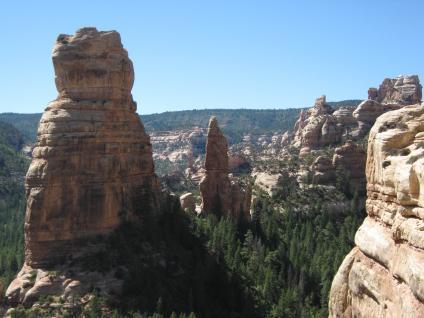 One of the hot button topics within the outdoor industry this year has been the evolving situation with several national monuments, including Bears Ears and Grand Staircase-Escalante. Both of those areas, along with every national monuments made dating back to the Clinton Administration, have been under review by new Secretary of the Interior Ryan Zinke. For weeks we've been waiting to learn the outcome of that review, as the fate of several of these outstanding outdoor settings sits in the balance. Now, a leaked memo indicates that Zinke will recommend shrinking the sizes of the monuments as was first speculated.
One of the hot button topics within the outdoor industry this year has been the evolving situation with several national monuments, including Bears Ears and Grand Staircase-Escalante. Both of those areas, along with every national monuments made dating back to the Clinton Administration, have been under review by new Secretary of the Interior Ryan Zinke. For weeks we've been waiting to learn the outcome of that review, as the fate of several of these outstanding outdoor settings sits in the balance. Now, a leaked memo indicates that Zinke will recommend shrinking the sizes of the monuments as was first speculated.A 19-page document posted by the Washington Post appears to be the memo that the Secretary of the Interior sent to President Trump. In it he suggests that four of the national monuments here in the continental U.S. be reduced in size. Those sites include Bears Ears and Grand Staircase-Escalante in Utah, Gold Butte in Nevada, and Cascade-Siskiyou in Oregon. The memo also suggests that the Pacific Remote Islands and Rose Atoll monuments also be scaled back as well.
At the heart of these suggestions is the idea that the monuments are inhibiting commercial development and the use of the land nearby. Zinke feels that grazing of livestock, mining, and timber production have all taken a hit due to the sizes of these particular places. Of course, conservationists would argue that those are the reasons these places were protected in the first place, although it seems the Trump administration is taking the stance that the monuments weren't created to protect a specific area or item, but were instead designated as public lands just to keep business from developing there.
While it should be noted that the Trump administration has not announced any specific plans yet, this kind of stance shows just how tone-deaf they are on these issues. The land in these monuments was protected for a reason, and because they don't see specific objects within the area that stand out from the others, they are missing the point altogether. It is the landscapes themselves that make these places special, which is why they have been protected from commercial development.
That said, I do think the parties involved are attempting to find some kind of compromise that keeps the monuments in place while also opening up commercial development. The problem with that stance is that those developments can have a negative impact on the environments that they sit adjacent to, and often times it is far to late to see the impact of it before the damage is done. Hopefully there is still time to avoid a change in the size and status of these places, but considering the track record of the Trump administration so far, that seems unlikely.

